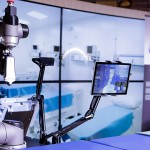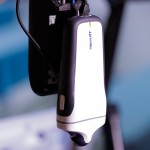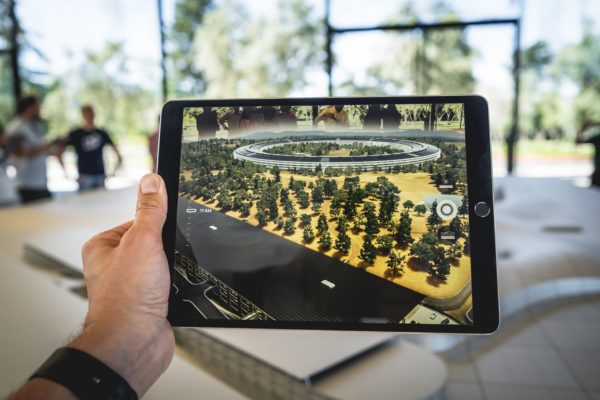Australians may soon be able to undergo ultrasound diagnostics from remote locations, thanks to world first robotics technology developed by Deakin University, in partnership with Telstra.
The haptics-enabled technology means a patient will no longer need to be in the same room as the sonographer. The medical professional could be as far as 1,000km away from the ultrasound unit, or the equivalent of the distance between Melbourne and Sydney.
The new technology has the potential to dramatically improve access to diagnostics tools for Australians living in regional and remote parts of the country, either not serviced by, or with limited access to, medical resources.
The HER (Haptically-Enabled Robotics) remote ultrasound technology was developed by Deakin University’s Institute for Intelligent Systems Research and Innovation (IISRI), with funding and technical support from Telstra as part of its Research Partner Program.
The system can be applied to abdominal ultrasound imaging to evaluate a patients’ kidneys, liver, gallbladder, pancreas, spleen, the abdominal aorta and other blood vessels of the abdomen. It can also be used for the diagnosis of abdominal pain, abnormal liver function and an enlarged abdominal organ.
With the addition of patient feedback technology, the sonographer can remotely monitor patient discomfort in relation to the applied probe force. This information can be used to assess the tenderness of the examined area, and compared with historical data on the patient.
IISRI Director Professor Saeid Nahavandi said Deakin and Telstra had collaborated on a world first trial of the technology, which has so far been successfully tested using data links between Melbourne and several regional and rural cities within Australia.
[testimonial_text]Our aim is to develop advanced haptic, or force feedback, and stereovision capability for remote ultrasound procedures[/testimonial_text]
[testimonial_picture name=”Professor Saeid Nahavandi” details=”Director -Institute for Intelligent Systems Research and Innovation”]
 [/testimonial_picture]
[/testimonial_picture]“It will increase the availability of ultrasound diagnosis for regional patients, which is incredibly important, but it will also minimise potential errors, saving time that might be spent having the patient re-scanned or transported to a regional hub.
“A principal advantage of this system is the ability to translate the sense of touch to the operator. Haptic feedback allows an operator to feel and experience the remote environment, through the robotic system, as though they were interacting with it directly.
“The addition of stereovision can improve operator situational awareness by giving the operator depth perception, which also contributes to the accuracy and efficiency of the ultrasound.”
Kannan Alagappan, Director of Technology, Technology Strategy at Telstra, said that Telstra was the perfect partner for the project, bringing network expertise and capabilities, along with commercial experience.
“Early stage testing has extended the trial beyond initial expectations by proving the technology on Telstra’s 4G wireless network,” Mr Alagappan said.
“It’s now portable and expandable enough to cover more than 97 per cent of Australia’s population.”
Deakin University clinician and Epworth Geelong Chair in Surgery, Professor Glenn Guest, said the ability to perform a remote ultrasound procedure using robotic technology would enable skilled surgeons, doctors and radiologists to make diagnoses from their preferred location.
“In the future, a number of remote communities could be supplied with an ultrasound ‘robot’ for medical diagnosis requirements,” Professor Guest said.
Telstra and Deakin jointly are actively seeking partners and exploring a number of paths to bring the technology to market, through global health technology companies, and health networks across Australia.
Once in market, this high technology system would be a driver in creating jobs in high technology manufacturing, diagnosis, maintenance and research and development.








